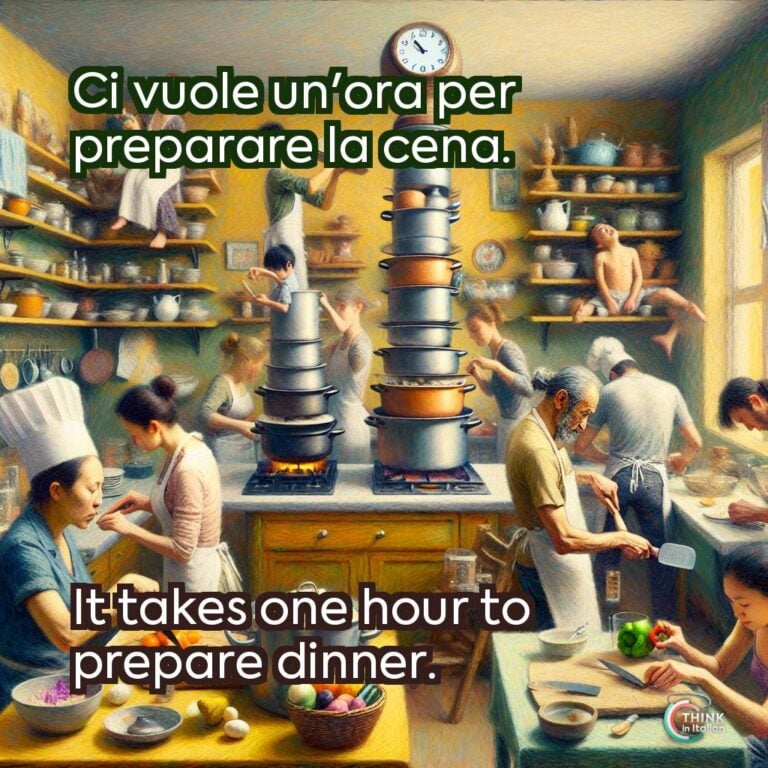The Italian Verb “Volerci”
Meaning
The Italian verb volere literally means “to want”, but when used in combination with the locative pronoun ci, it takes on the meaning of taking a certain amount of time to do something.
In fact, volerci is used to express how long it takes to complete an action, for example:
Ci vogliono due ore per arrivare.
It takes two hours to get there.
Quanto ci vuole per fare una torta?
How long does it take to bake a cake?
As you can see, the verb can be either singular or plural, as it depends on the amount of time it is required to perform a certain action.
Conjugation
As with all pronominal verbs – those verbs that require a pronoun to be properly conjugated – the verb volerci must be divided: the pronoun on the one hand, and the standard conjugation of the verb volere on the other.
However, as I mentioned before, there are only two forms you will need: third person singular and third person plural:
Let me show you the present tense:
- ci vuole
- ci vogliono
Of course, make sure you know the rules of pronouns placement with verbs in Italian!
Unlike reflexive verbs, where the reflexive pronoun changes depending on the subject, the pronoun ci never changes when used in this structure.
The pronoun ci has several different meanings, but it is typically used as a locative pronoun, meaning it substitutes for nouns referring to places. To make the use of this structure easier, I always tell my students they should interpret it in the same way here as well.
So, try to perceive it as standing for “in it”, “there”, resulting in a translation like:
Ci vuole un’ora per finire il lavoro.
In this situation it takes one hour to finish the work.
Ci vogliono almeno 2 giorni per la spedizione.
In this situation it takes at least 2 days for the shipping.
When using volerci to indicate the time it takes to perform an action, we generally use preposition per to introduce the action, and it is always followed by a verb in infinitive tense.
Let me show you some more examples:
Quanto ci vuole per arrivare in ufficio?
How long does it take to get to the office?
Ci vogliono 30 minuti per preparare la cena.
It takes 30 minutes to make dinner.
Ci vuole un minuto a fare un acquisto online.
It takes one minute to buy online.
“Volerci” vs “Metterci”
Metterci is another pronominal verb, also used to indicate how long it takes to complete an action. Both volerci and metterci and share the ci structure, meaning they necessarily require the pronoun ci to be conjugated and this pronoun never changes.
However, there is an important difference between these two verbs. Here, I will explain this difference how I explain it to my students:
- volerci is objective: it is used to emphasize the amount of time that is needed to complete an action. This is why it can be conjugated either in the third person singular or plural only.
- metterci is subjective: it is used to emphasize how long it takes a specific person to complete an action. This is why it is conjugated according to the subject of the sentence, taking on a subjective meaning.
In this sense, we might say that metterci sounds more personal than volerci.
Ci vuole un’ora ad arrivare in centro.
It takes one hour to get to the city center (to anyone, to people in general).
Ci metto un’ora ad arrivare in centro.
It takes me one hour to get to the office (to me specifically).




